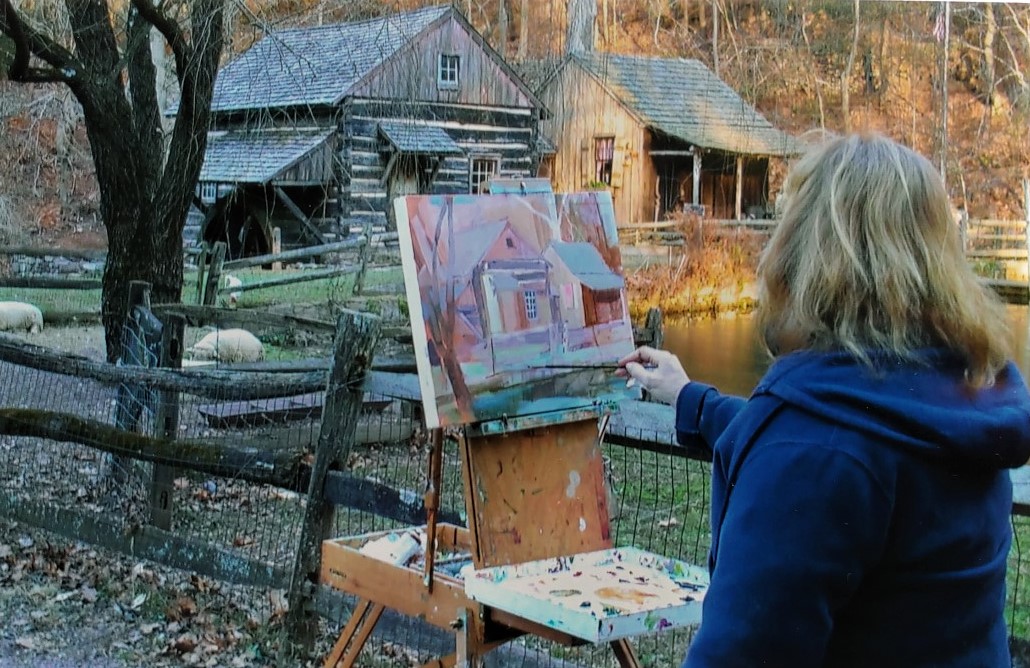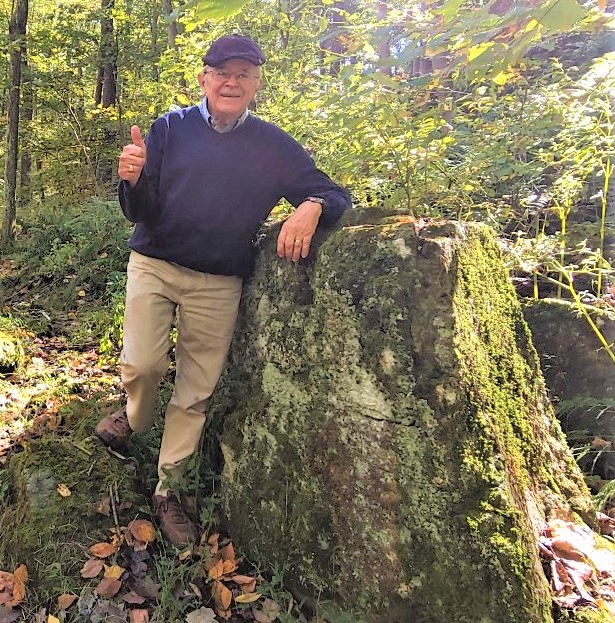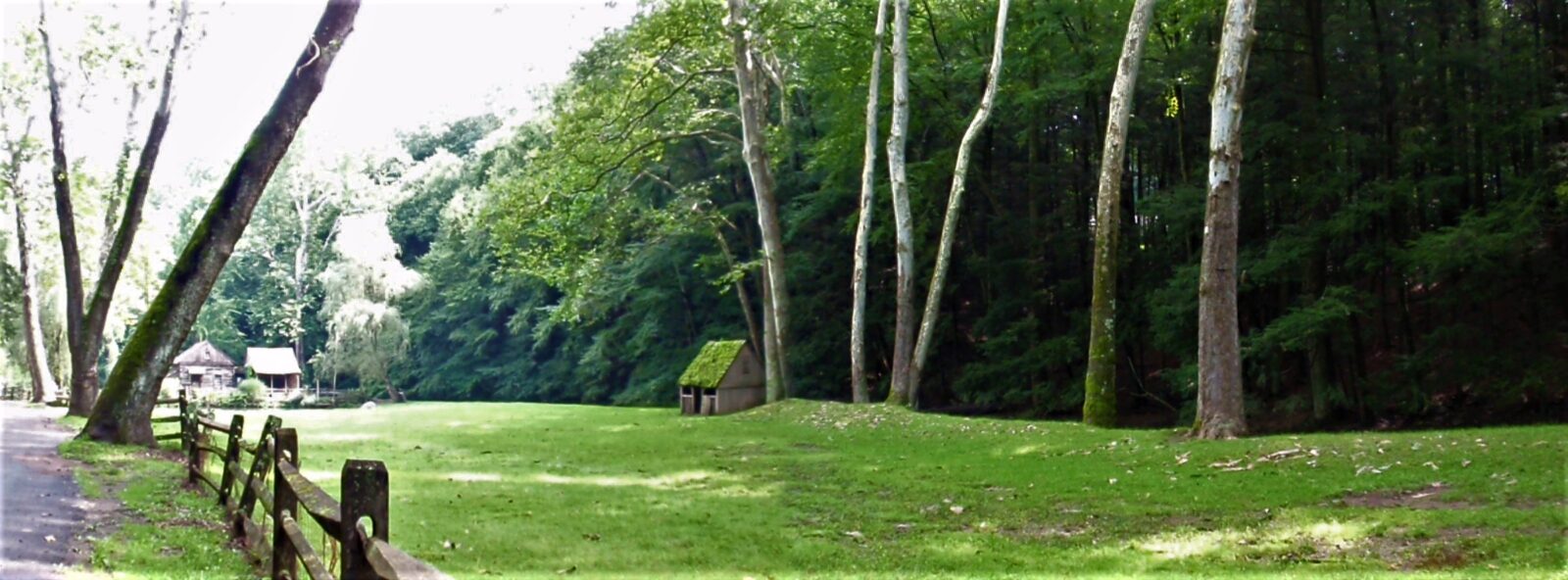7 reasons why you should plan a visit in 2022.
It’s only 3 miles long. But it leads way back in county history amid scenery unrivaled in Buck County.My family discovered Cuttaloosa quite by accident many years ago after a late afternoon visit to the now closed Cuttaloosa Inn at Route 32 at the Delaware River. After dining on a terrace overlooking the inn’s picturesque waterfall, we followed Cuttaloosa Road inland wedged in by steep hills. Hugging swift-flowing Cuttaloosa Creek, the macadam drive opened to a fairy tale a quarter mile from the river. On one side of the creek was a waterwheel churning creek water beside a rustic shelter for sheep and chickens. Over lording the tranquil scene amid the distant tinkle of bells on sheep collars was “Cuttaloosa Glen” mansion on the opposite side of the road. The road continued upstream through emerald meadows with free-standing white sycamore trees and flowering rhododendrons.

We’ve returned again and again, a tradition that now includes our grandchildren. Over the years, we’ve unlocked Cuttaloosa’s history and share today seven reasons it’s unique.
SPIRIT:
Long before anyone wrote anything about Cuttaloosa Valley, a substantial Native American village existed at the creek’s headwaters. If you enter the valley at Sugan Road’s intersection with Cuttaloosa Road, preserved meadowlands once was the site of the Lenape village of Gattalosso. Variations on the name include Quatielassie, Quetyelassy, Quotylossey, Cutelausse and Cuttelassey before finally settling on Cuttalossa for not only the village but the creek and its spectacular run to the river.
LUMBER AND STONE
The rush of the creek in its run to the Delaware enabled settlers to build water-powered lumber, grist and saw mills in the mid-1700s. Ruins still exist. The valley’s hillsides were quarried in the 1800s to supply sandstone for mansions in New York and Philadelphia including its Reading Railroad Terminal. Cut by 200 workers, the stone made its way to market aboard boats on the Delaware Canal and via a suspended tramway over the river to New Jersey.
SALVATION
A familiar figure in the valley was grade-schooler Zebulon Pike who lived in a red house on the hill above the creek in the late 1700s. Zeb daily walked to a one-room Quaker school on Sugan Road in Solebury Village three miles away. When he was old enough, he entered the U.S. Army and as a lieutenant led two explorations of the Louisiana Purchase for President Thomas Jefferson. He discovered and climbed a Rocky Mountain peak on the far side of what was then called the Great American Desert separating the U.S. from Mexico. The 14,000-foot summit would become famous as Pike’s Peak, the sight of which represented salvation to California gold seekers crossing the desert from Kansas City. Their familiar refrain on departure was “Pikes Peak or Bust.”
LEGEND
During the American Revolution, the infamous Doan Gang haunted the valley. A persistent legend is the outlaws tortured the proprietor of the valley’s Hard Times Tavern on River Road. They forced him to dance on a fire-heated iron bake pan to get him to disclose where he kept his cash. The tavern today is a private home across from Cuttaloosa Inn.

POETRY
One of the nation’s foremost abolitionists and poets frequented the valley in the mid-1800s. John Greenleaf Whittier lived for two years on Coppernose Mountain overlooking Cuttaloosa Creek. He enjoyed strolling the valley en route to Lumberville to gather mail at the village postoffice. Whittier’s presence inspired the formation of a poetry society after the Civil War. The group met at “Poet’s Rock”, a granite outcropping with a flat top beside the creek. Local poets would stand on the rock and read lyrics to gathered friends. Among them was Thaddeus Kenderdine who began:
“Where Cuttaloosa’s waters roll
murmuring on their way,
“Twixt hazel clumps and elders,
‘neath old tree mossed and gray;
“Just while across the valley
from the old, old grist-mill come
“The water wheel’s low patter,
the millstone’s drowsy hum.”
ART
It’s normal in Cuttaloosa Valley to find an artist capturing a moment in oils or watercolors. Perhaps the lush landscape is what drew Daniel Garber and his wife to the valley in 1907. He bought Cuttaloosa Glen and turned its barn into an art studio. He also acquired a nearby cottage for a rental retreat. Garber, a professor at the Pennsylvania Academy for Fine Arts for 40 years, was a key member of the art colony at Phillips Mill in New Hope. His American Impressionist art is much admired today.
BEAUTY
Driving Cuttaloosa Road is a mesmerizing, relaxing experience. You come away with a sense of just how special this corner of Mother Nature is. Local author Willis M. Rivinus refers to “the extraordinary heritage of one of the most beautiful small valleys in America.” We look forward to seeing you there in this year.
***
Sources include “The Cuttaloosa” by William J. Bucks published in 1897 by the Doylestown Intelligencer;”Cuttaloosa Valley Historic District” on the web at www.livingplaces.com/PA/Bucks_County/Solebury_Township/Cuttalossa_Valley_Historic_District.html, and resources provided by the always helpful Solebury Township Historical Society.

